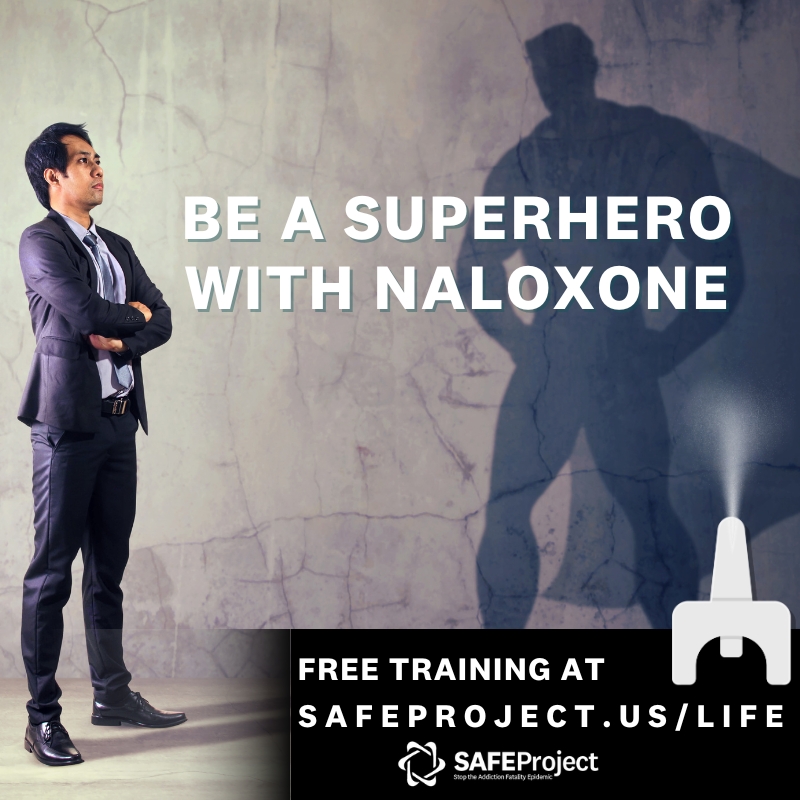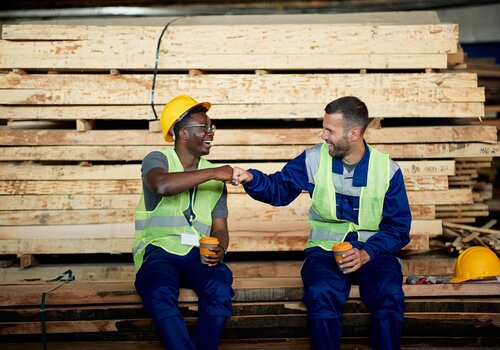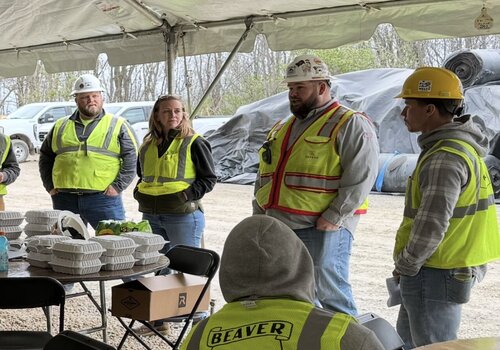If you are in a mental health crisis, call or text 988 to speak to a crisis counselor now. You can also text HOME to 741741 to reach the Crisis Text Line and speak to a live, trained crisis counselor. Learn more about the Suicide & Crisis Lifeline 988.
When a child loses all parents, they’re called orphans. When a person loses a spouse, they’re called a widow or widower. There is not a word for Admiral James and Mary Winnefeld. Their son Jonathan died at 19 from an accidental opioid overdose.
“Probably most people don't know him,” Jeff Horwitz, CEO of SAFE Project, says about Admiral Winnefeld. “But they know on Sept. 11 that an aircraft carrier was turned around in the Persian Gulf. He was on that aircraft carrier and commander at the time.”
Admiral Winnefeld, the ninth Vice Chairman of the Joint Chiefs of Staff and second highest-ranking officer in the military, couldn’t save his son.
“He's a Georgia Tech engineer and his background is a top gun pilot, and here he is learning for the very first time that addiction is a disease, learning for the first time that he can't take care of his own son with his own hands,” Horwitz says. “And understanding and watching his son's brain heal led to his realization that there's so much out there that they need to learn. What was the tragic end, though, is that they saw Jonathan heal. They saw that he was cured of the disease of addiction but didn't realize that recovery was a lifetime journey.”
Tragically, the realization was too late. Jonathan died on his fourth day of college. After Jonathan’s death, the Winnefelds turned their pain into a plan to prevent this from happening to other families by creating SAFE Project.
SAFE PROJECT TODAY
Today, SAFE (Stop the Addiction Fatality Epidemic) Project has six functional strategic initiatives to accomplish its mission:
- Raising public awareness
- Training programs
- Reducing the number of misused and expired prescription drugs
- Getting involved with law enforcement and criminal justice
- Connecting people with substance use disorder treatment
- Providing family support
There are four portfolios of people that SAFE Project focuses its care: colleges and universities, communities, military and workplaces. SAFE Project works in these portfolios because – as was clear in the Winnefelds’ case – you have to talk to people about where they already are if you really want to help.
“How you talk to the military force is very different than how you talk to a community or college,” Horwitz says. “You don't talk about substance use. You don't talk about weaknesses or mental health challenges. You really have to go down to the raw bones of wellness and give them the tools to succeed from a wellness standpoint, and then hope to open the aperture for other things.”
 SUBSTANCE USE DISORDER IN CONSTRUCTION
SUBSTANCE USE DISORDER IN CONSTRUCTION
The construction industry is tackling the challenges head-on, Horwitz says.
It’s a lot of hard work, but it’s necessary. It is estimated that 15% of construction workers have a substance use disorder compared to 8.6% of the general U.S. population.
While there are differences between substance use disorder and dependency, the two are connected and can affect just about anyone. There is a stigma attached to substance use disorders and mental health, but you can’t always tell by looking at someone what they’re struggling with at home. This was certainly the case for the Winnefelds.
With construction, we have an added trigger: repetitive injuries. These are muscle and nerve injuries caused by the same constant motion and use. These injuries are often treated with opioids, and we’ve discovered that some of these injuries are being treated with opioids first rather than as a last resort option.
MENTAL HEALTH TALKS BEGIN
Cal Beyer, senior director of SAFE Workplaces, has partnered with just about everyone in the construction and excavation industry to help bring forth conversations around mental health and substance use disorders. If you’ve gotten any kind of help, Beyer was probably involved at some point to make that program happen.
Beyer spent 10 years working with public safety and noticed that police, EMS and fire officials had officer assistance programs, but when working through Sept. 11 and Hurricane Katrina, he noticed there wasn’t any support for the contractors who were now working side-by-side with first responders.
“And worse, when we called to ask, ‘How are your people doing working in these tough conditions?,’ we got answers like, ‘We're tough. We're fine. We're construction. This is what we do,’” Beyer says.
He began learning about psychological first aid from Bob Vandepol, “how to help de-escalate, defuse, to bring calm, to bring clarity to a job site, to check in on people to offer support services using employee assistance programs.” Then, Hurricane Katrina hit.
“Bob called me, boots on the ground in New Orleans,” Beyer says. “He said, ‘This is going to be worse than 9/11. The impacts are going to be so far reaching. Keep doing what you're doing. Get contractors together.’”
BRIDGING THE GAP IN CONSTRUCTION
Beyer and Vandepol wrote “The Human Element of Crisis Management” in 2009 and some workplaces implemented those techniques. “Those early adopters started to see people were responding better when we set expectations for normal healing in the aftermath of those bad events,” Beyer says.
The topic of mental health was taboo. Beyer was asked to write about drug testing, but not much about the opioid epidemic and the human side to these conversations. It wasn’t until after the COVID-19 pandemic that Beyer began getting requests to write about substance use disorders.
During the pandemic, people couldn’t access medication-assisted treatment, clinics or safe syringe sites. This created stress and pressure that led to an increase in overdoses: a 35% increase in the first post-pandemic year with a 15% compounded increase the next year.
“Over a five-year period, that number doubled. And what SAFE Project is allowing us to do in the workplace is to break the stigma associated with substance use and then address the realities of substance misuse,” Beyer says. “So, a lot of companies feel, well, I have a drug testing program. I've got a drug free workplace policy. Isn't that enough? And we would say, ‘no, because it is not addressing the reality that some workers and/or family members need support and resources for recovery to overcome addiction.’”
The Winnefelds won’t get Jonathan back; that time is lost. But that pain was turned into a massive project that is preventing the same from happening to another family and workplaces should be part of that solution.
Content Notes: The CONEXPO-CON/AGG 365 newsletter will feature content about mental health over the course of the next few months. While these topics can be challenging, we want to remind you about one underlying feature: hope.
We will tackle topics related to suicide, PTSD and other mental health conditions that are prevalent in the construction industry. There are resources to help – whether you need help yourself or want to help a friend. Where there is help, there is hope.
One way to attack the mental health stigma is by telling your story. Please contact us if you would like to share your journey with fellow CONEXPO-CON/AGG 365 readers.
Another way to help is to share this story on your social media or with someone who may benefit from hearing about mental wellness in the construction industry.
Images courtesy of SAFE Project












